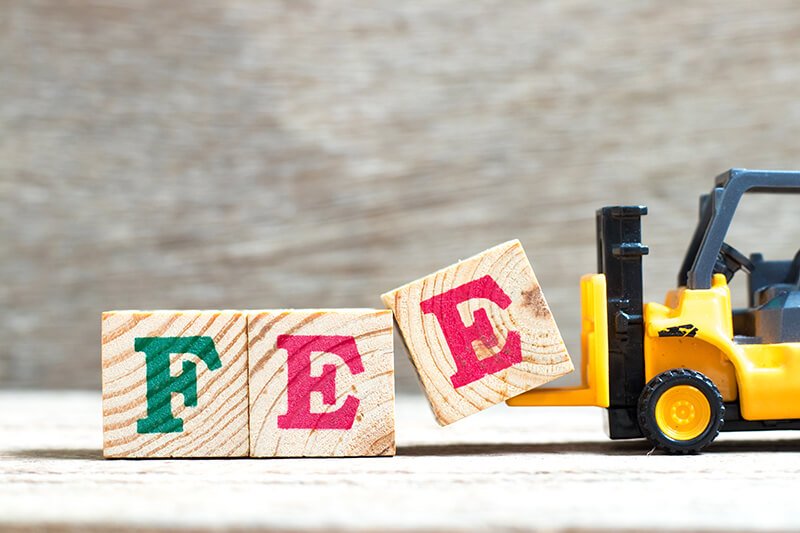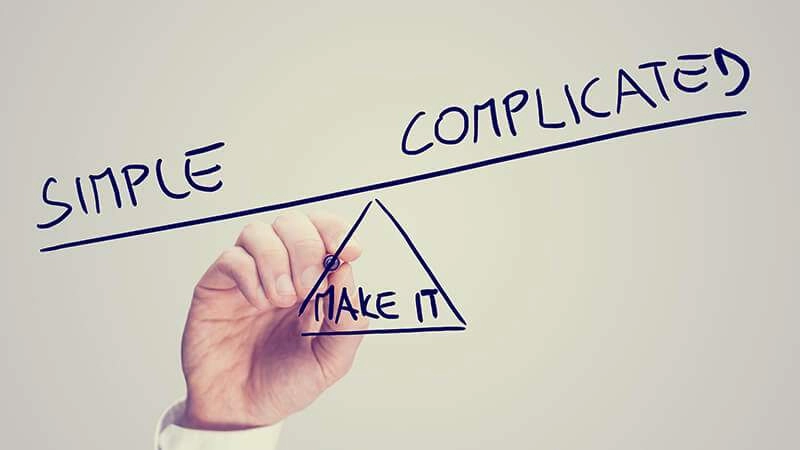Whether you’ve been selling on eBay for years or eBay is completely new to you, here are 5 pointers that can help you boost your online sales!
Tip 1: Use eBay’s functions to your advantage
When it comes to the online world, we’re forever learning. Things change rapidly and eBay is no exception. The website regularly adds or deletes functions and options for its buyers and sellers. Stay on top of things by joining a forum or reading newsletters. eBay’s functions are only valuable if you use them! Here are a couple of functions you should consider using!
Offer to Watchers
A couple of years ago, eBay introduced the ‘send offers to listing watchers’ function. This allows sellers to directly message auction watchers with a lower-price offer. There are some conditions though!
- You can only use this function for fixed price listings that have been online for at least 10 days.
- You must offer a new price that is at least 5% lower than the original price.
- Your offer is binding.
Head to the ‘manage active listings’ menu to find the ‘send offers’ button. You can send a message to up to 10 watchers at a time. It’s possible to send a personal message, so use that to your advantage. Watchers have 48h to decide on your offer. If the first 10 watchers don’t react to your offer, you get the chance to contact another 10 potential buyers from your watcher’s list. However, you can’t contact someone more than once.
Private Listings
If you are selling sensitive goods, like high-value items or medical products, or “adult goods,” such as lingerie, a private listing could be the key to convincing (shy) buyers to bid and buy. With a private listing, bidders’ and buyers’ identities are hidden from the public. The seller, who must know the buyer’s identity to complete the sale, is the only one who sees the buyers name.
Private selling still allows buyers to give you feedback after the transaction. However, their review will not link to the private-listed items that you sold.
Best Offer Option
As a seller, you can add a Best Offer Option (OBO) to your listing. This allows potential buyers to make you an offer. This option gives you valuable insight into what customers are willing to pay, while also allowing you to communicate with your clients. When an offer has been made, you have 48h to accept, decline or react with a counteroffer.
eBay doesn’t automatically notify watchers that you’ve added this OBO option to your listing. Although customers will soon find out about when they read your product description, you could also choose to update the title of your listing to include this information.
Allow Local Pick-Up
Adding a local-pick-up option doesn’t mean buyers have to come to your house to pick up their package, it simply leaves customers with the option to do so. Why is this interesting for you as a seller? It’s possible for eBay buyers to filter their search results by proximity to the seller. Shoppers who do this either don’t want to pay for shipping or they don’t want to wait for their order to arrive. In fact, a lot of ‘How to Bargain’ articles advise bargain hunters to search for sellers from their own neighbourhood as a way to save money. As long as you don’t mind people picking things up at your house, adding this option is an easy way to add visibility to your listing.
Tip 2: Fees and pricing

Settling on a price can be challenging. Where to start? Which fees and costs should you take into account when calculating your price?
Barcodes and spying
If you’ve forgotten how much you paid for the second-hand item you’re trying to sell, perhaps the eBay app can help you. This app allows you to scan the barcode on your product so you can see the original price.
If your product doesn’t have a barcode or you’re selling something new, it’s always a good idea to spy on the competition. Have a look at the ‘sold items’ section of your competitors to see at what price they’ve sold in the past. This will give you an idea of what to expect for your sales.
Starting price for auctions
London Business School and Northwestern University in the US have researched auction starting prices. Their conclusion? Start low! Low prices are a show stopper for deal hunters. It grabs their attention and bidding becomes exciting. Once people are excited, they get emotionally involved and they often end up bidding more than they ever intended to. If you feel unsure about a $1 starting price, choose a starting price that is the absolute minimum of what you would be willing to accept.
This psychological trick, however, doesn’t work for all products. If you’re selling a niche product, it’s best to set a price that reflects the value of the item. Niche buyers are what they are: a niche. There are not many of them around and so it’s unlikely the bidding will take on competitive proportions. These type of customers are generally well-informed about the worth of the product they are looking for. So in this case, setting a low price might backfire with buyers thinking the price is too low for your product to be qualitative.
eBay Fees
You can list up to 1 000 products on eBay each month for free. If you want to upload more than that it will cost you 30 cents per item. This is a flat rate. That sounds good, but it’s only part of the story. When you sell something, eBay takes 10% of your earnings and (annoyingly) this includes postage costs.
Now and then eBay does $1 max weekends. If you list items during these weekends, eBay will only take $1 out of your revenue. How do you find out about these weekends? Sometimes eBay will send you an e-mail to inform you. It pays off to keep your eye on eBay forums from time to time and to regularly check your eBay message inbox. Be careful to read the terms and conditions carefully, because there are a lot of them! Your listing, for example, will have to sell within 30 days and automatically renewed listings aren’t considered part of the deal either.
Pricing higher or lower
Perhaps this has happened to you: Your listing has been up for a while, you can see it’s been viewed many times, but it’s just not selling? Lowering your price is the logical next step. Everyone likes to feel like they’ve done a good deal. So, if people have been keeping an eye on your product, but not buying, offering a lower price can be the final nudge they’ve been waiting for. Always lower your price with at least 5%. Any discount lower than that will go unnoticed.
Sometimes, however, raising your price is the way to go. Adding to your price creates the idea of emergency. Potential customers will think: I need to buy this before it gets even more expensive! On top of that, a higher price will communicate to them that this product is really worth its money.
Price setting is a psychological game that works on one condition: don’t use it too blatantly or too often. Once people know you’re messing with their heads, they’ll go elsewhere to find what they’re looking for.
Tip 3: Weigh your words

eBay has an 80-character limit for product titles, so choose those words wisely! Don’t try to be witty or clever, be wise! Get into the head of your potential customers and try to imagine what they will type into the eBay search engine. Which words generate the most traffic to your profile? What will grab the customer’s attention?
Say it right
Do some research online. Which words are people using to sell their shoes? Sneakers and trainers are synonyms, but research shows that sneakers are more likely to sell (at a higher price) than trainers. Why? Because sneakers is the more popular word. If you’re not good with words and you’re not sure what will work, take a look at what your competitors are writing. Be careful to never copy paste someone else’s listing as this is a breach of eBay rules. There are also tools like the Goofbid eBay most popular that can help you find the right words.
Say enough
Always start the product description with the benefits your product offers. This is what will spark the buyer’s interest. There’s no need to solely stick to the tangible facts. For example: describing the scent of your soap as lavender is important, but informing customers that using the soap will be a luxurious, relaxing experience is just as necessary.
Once you’ve got through the plus sides, don’t shy away from the downsides (if they’re there). It’s important to be honest. If your product is damaged, say so. Include all the details, model size, size, style, colour, precise dimensions and functions. Be as specific as possible. People are more likely to search for a ‘Ted Baker handbag’ than simply ‘handbag’. Nobody knows your product like you, so put that knowledge on display!
Say it clearly
Your listing is not a Russian literary novel. People aren’t there for the quality reading time. Thus, make your description as clear and easy to read as possible. This means you should try to keep your sentences short and use clear formatting. Use paragraphs and white spaces to avoid a bulky text that scares off readers.
Also mind your grammar and spelling. This might sound silly, but if you misspell a word (especially in your title) customers will not find your listing. Moreover, when customers spot a grammar or spelling mistake it will lower their trust in you. Sure, not everyone is a pesky English teacher, but nobody’s eager to trust a bad spelling bee.
Tip 4: Your timing matters

The internet is open 24/7, so it’s tempting to think that any day is a good day for listing an eBay item. Wrong! Here’s why.
Thursday to Sunday
The Journal of Industrial Economics shows that 10-day auctions yield 42% more than three- and five-day auctions, and 18% more than seven-day auctions. The longer your auction’s online, the wider the reach. Adding your auction on a Thursday evening means it will end on a Sunday evening. At this time most people are at home, without distractions, ready to finalize their purchase, which is exactly what you need! When there are more people bidding, the pressure mounts and buyers are more likely to ‘fight back’ in the auction, thereby raising the price. Take into account that your customers might live in a different time zone.
Sell products in season
If you’re hoping to sell Christmas decorations in the middle of summer, you’re in for a challenge. Some sales require good timing. There’s nothing wrong about preparing a listing and storing it on your pc until the right time comes around. If you’re hoping to sell a seasonal product like a set of water guns or picknick blankets, you don’t have to wait to list them until the first day of summer. It’s best to aim a little bit ahead of time when the internet isn’t flooded with competition yet.
Tip 5: Sell a product, provide a service

Once you have your product, photos, price and description sorted, it’s time to sell! Don’t forget that your sale isn’t over until the customer is happy. Here are some service aspects you should think about!
Shipping costs
If you’re posting your goods, you need to think about your shipping strategy.
First of all, you need to decide on how much you will charge. Shipping costs need to be in proportion to what the customer is paying for the product. Paying $5 for a $5 T-shirt doesn’t seem right. If it’s necessary, calculate postage costs into the product price to make it seem fair.
You can try to lower shipping costs by carefully choosing your packaging. Try to stay within the postal service’s standardised dimensions to avoid additional costs.
Finally, treat the packaging as an extension of your brand. A nicely wrapped parcel makes people feel festive and it adds value to their overall shopping experience. You have to wrap things up any way, you might as well make it count.
Allow returns
A lot of sellers are scared of allowing returns for fear of high costs. Although it’s true that returns cost sellers money, it’s also true that customers are willing to pay more if they know they’ll be able to return their purchase. If all customers pay more, because they appreciate the return service, and only some customers actually send something back, the final balance is positive for you as a seller. Moreover, it makes your listing seem more trustworthy and customers will be quicker to buy.
Add a charity
When listing your item on eBay, you can choose to donate 10% – 100% of your auction’s final sales price to a charity of your choice. Most buyers are looking or the cheapest price, but there are customers who filter for listings donating to a certain charity.
Donating to a charity doesn’t necessarily equal a loss of revenue. Your donated proceeds are tax-deductible, for example. Additionally, eBay credits back a portion of the seller fees — equal to the percentage of your sales price that you designate for charity — after you sell the item, increasing your profits on the sale.
What’s more, people are willing to pay more when they know part of the proceeds will go to charity. If the charity listing can attract more shopper and you can sell at a higher price, you often end up gaining more, while helping out a good cause!
And finally…
Don’t worry too much if a listing doesn’t sell straight away. Always remember that if at first you don’t success, you can try again later. Good luck!
